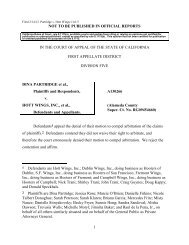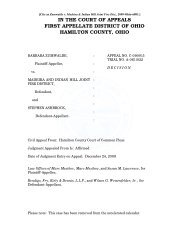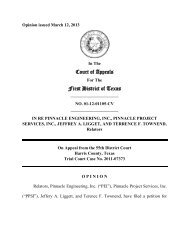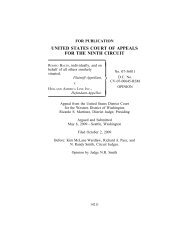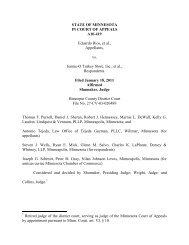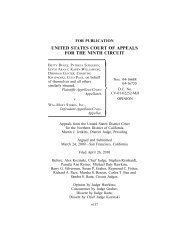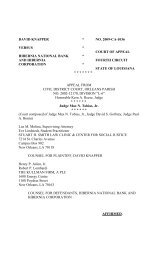state of louisiana court of appeal, third circuit 10-218 ... - LawMemo
state of louisiana court of appeal, third circuit 10-218 ... - LawMemo
state of louisiana court of appeal, third circuit 10-218 ... - LawMemo
Create successful ePaper yourself
Turn your PDF publications into a flip-book with our unique Google optimized e-Paper software.
Guidry contends that she was wrongfully terminated because <strong>of</strong> her gender.<br />
Specifically, she asserts that though she was terminated when she failed to report to<br />
work after calling in, other similarly situated male employees received a less harsh<br />
method <strong>of</strong> discipline when they engaged in the same conduct.<br />
Because Guidry has not <strong>of</strong>fered direct evidence <strong>of</strong> discrimination, her claim is<br />
properly analyzed under the McDonnell Douglas framework. As noted above, to<br />
establish a prima facie case <strong>of</strong> discrimination, Guidry must show that: (1) she is a<br />
member <strong>of</strong> a protected class; (2) she was qualified for her position; (3) she suffered<br />
an adverse employment decision; and (4) similarly situated male employees were<br />
treated more favorably.<br />
Glazer’s does not dispute that Guidry satisfies the first three prongs <strong>of</strong> the<br />
prima facie standard. They question, however, whether Guidry <strong>of</strong>fered appropriate<br />
“similarly situated” comparators who Glazer’s treated more favorably than she. For<br />
this <strong>court</strong> to compare Guidry to other employees, she must show that she “was<br />
similarly situated to those other employees in terms <strong>of</strong> performance, qualifications,<br />
and conduct” and that no other unique facts differentiated their situations. Lester v.<br />
Sec’y <strong>of</strong> Veterans Affairs, 514 F. Supp.2d 866, 874 (W.D. La. 2007).<br />
We find that Guidry has not identified similarly situated comparators. Guidry<br />
cites two full-time warehouse workers, Earl LeBlanc and Casey Howard, whom<br />
Leger identified as individuals who missed work without notice and were not<br />
terminated. Rather, Glazer’s gave them “occurrences.” These individuals held the<br />
same position as Guidry, however, they were not engaged in the same conduct.<br />
Guidry did not just miss work without notice. Guidry sought permission to miss work<br />
and when that permission was not granted, she missed work anyway. Moreover<br />
5




